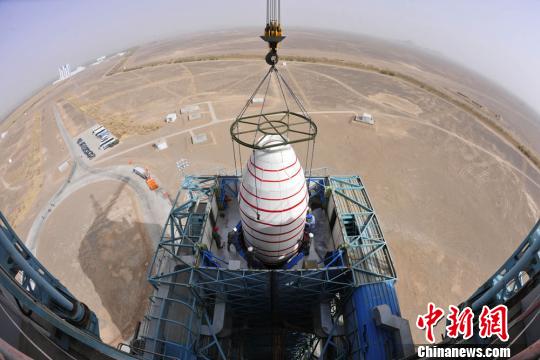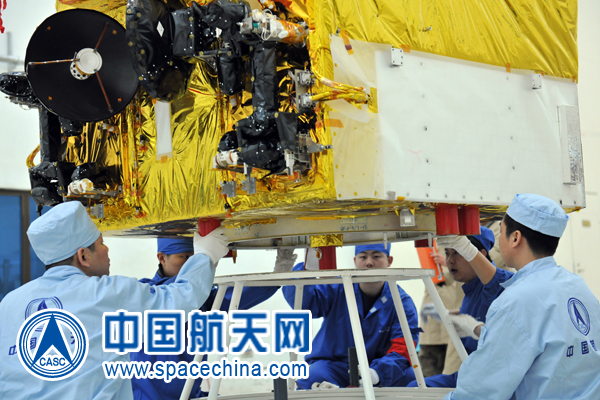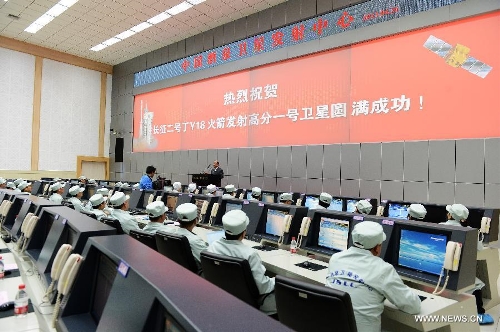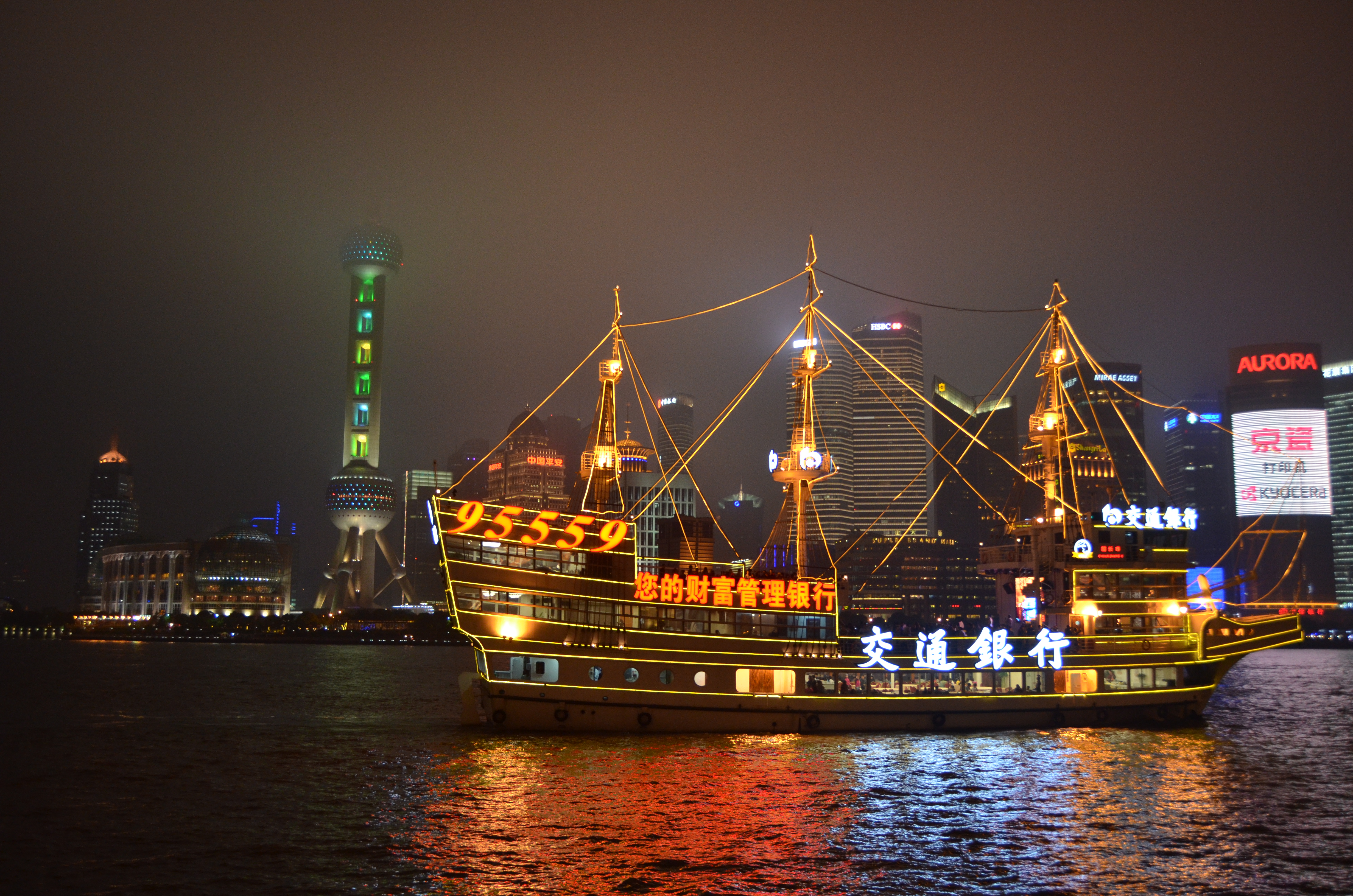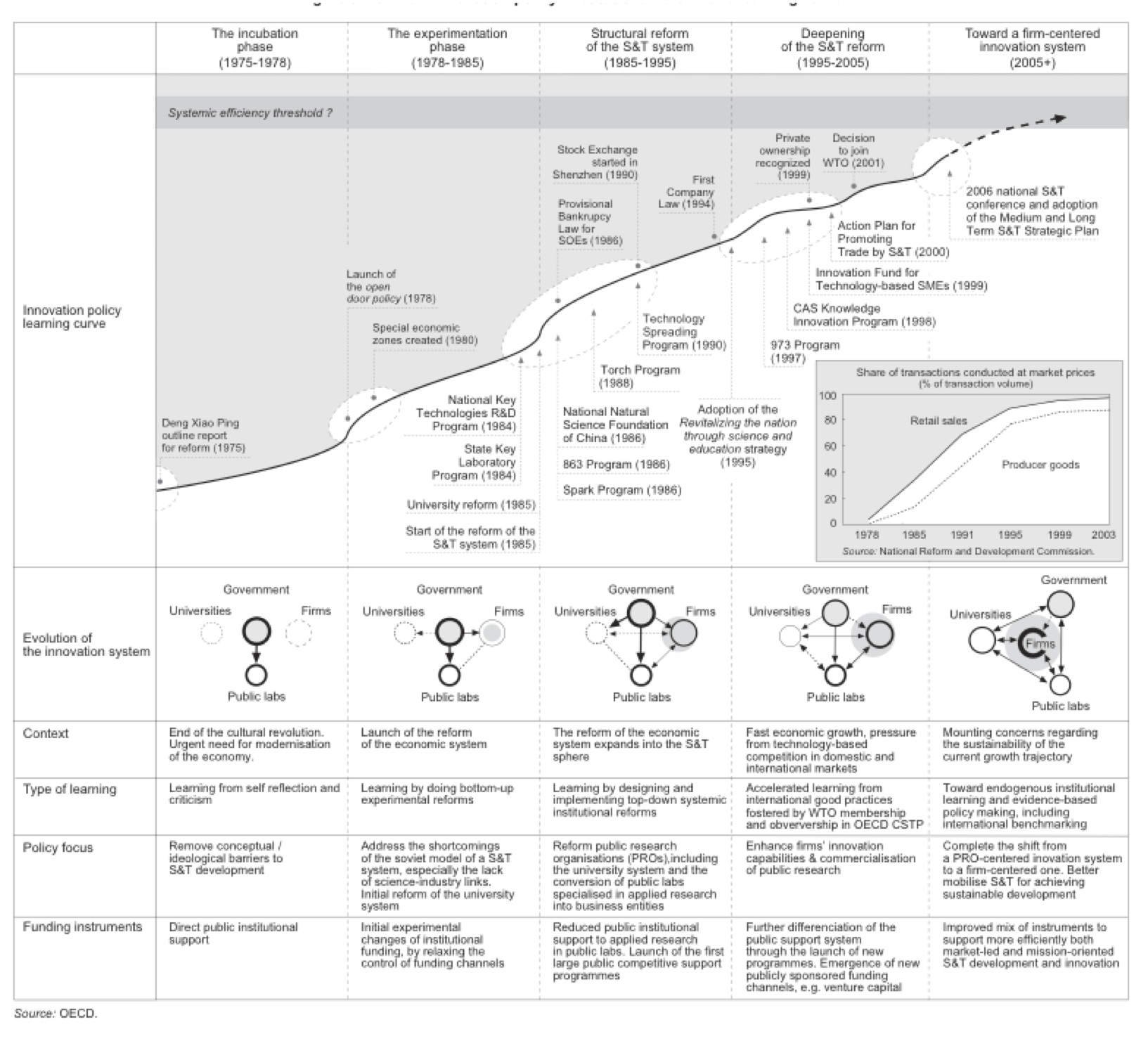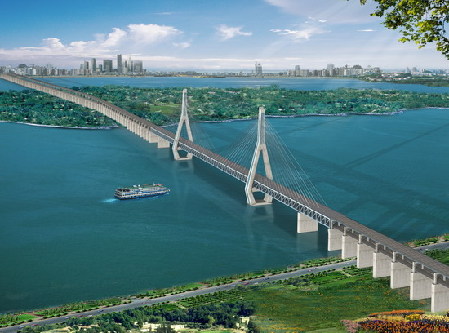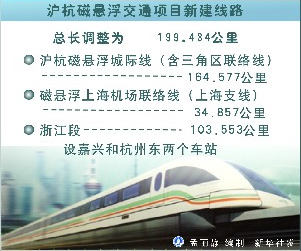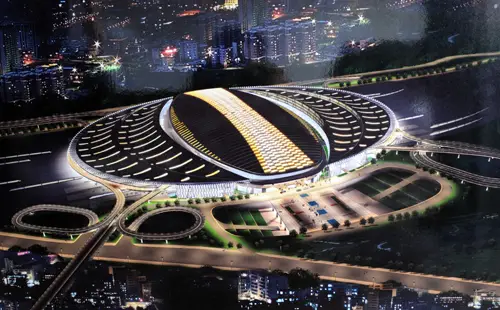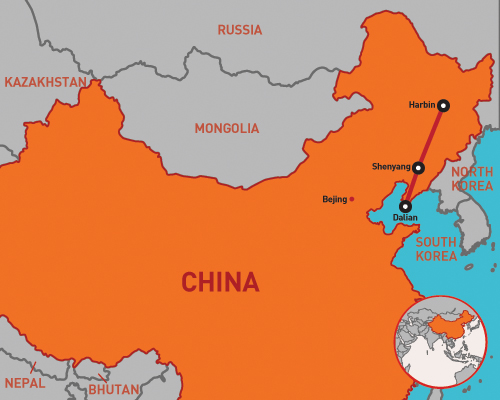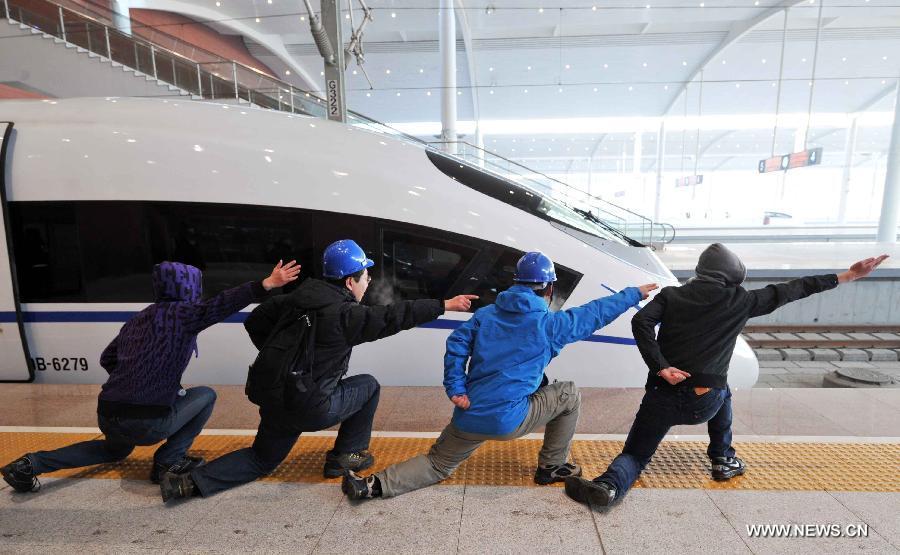"Hace 40 años Deng Xiao Ping pensó que solo el capitalismo podía salvar a China. ¿Ahora el capitalismo piensa que solo China puede salvar al mismo capitalismo...?". Zizek.
martes, 30 de abril de 2013
China top personal computer market
China unseated the United States last year as the top market for personal computers due to demand in rural areas where people opt for desktop machines, according to market tracker IHS iSuppli.
PC shipments to China tallied 69 million units in 2012 while 66 million were shipped to the United States, where booming popularity of tablets and smartphones has eaten into sales of laptop or desktop computers, IHS reported.
'China rose to the top of the PC market for the first time ever on an annual basis last year, relegating the United States to second place,' IHS said in a PC Dynamics Market Brief.
Unlike other parts of the world where sales of desktop computers have lagged behind those of laptop models, demand in China was evenly split between categories, according to IHS.
'The relatively large percentage of desktop PC shipments in China is due to huge demand in the country's rural areas, which account for a major segment of the country's 1.34 billion citizens,' said IHS analyst Peter Lin.
'These consumers tend to prefer the desktop form factor.'
IHS predicted the balance to shift in the coming year as competitively priced laptops gain in popularity and the China market would begin to mirror the global 36 per cent to 64 per cent 'desktop-to-notebook' ratio.
'The China PC space shares one common trait with the worldwide PC market,' IHS said. 'Like the rest of the world, demand in China remains weak as consumers migrate to using mobile devices like cellphones.'
http://bigpondnews.com/articles/Technology/2013/04/30/China_top_personal_computer_market_868197.html
In China, U.S. top military 軍官 (officer) defends U.S. pivot to Asia
By Terril Yue Jones
BEIJING | Mon Apr 22, 2013 10:23 am EDT
(Reuters) - The United States' top military officer on Monday defended the re-orientation of U.S. foreign policy towards Asia in front of his Chinese counterpart, a week after Beijing criticized Washington for ramping up its military presence in the region.
China is uneasy with what the United States has called the "rebalancing" of forces as Washington winds down the war in Afghanistan and renews its attention further east.
China says the policy has emboldened Japan, the Philippines and Vietnam in longstanding territorial disputes with Beijing.
U.S. Chairman of the Joint Chiefs of Staff Gen. Martin Dempsey said the United States "has been and will continue to be a Pacific power.
"We seek to be a stabilizing influence in the region," Dempsey said at a news conference at China's Ministry of National Defense. "In fact, we believe it would be our absence that would be destabilizing in the region, not our presence."
Dempsey was speaking at a joint press conference with Chinese Chief of the General Staff of the Chinese People's Liberation Army Fang Fenghui after both sides held talks earlier in the day.
China's defense ministry made a thinly veiled criticism of the United States last week for increasing tensions in the Asia-Pacific, saying China faces "multiple and complicated security threats" due to the U.S. strategy.
Fang said there is a possibility that North Korea could launch a fourth nuclear test.
"We ask all sides to work on the North Koreans to stop the nuclear tests, and stop producing nuclear weapons," he said.
Fang reiterated China's stance that it is firmly opposed to nuclear tests by North Korea.
China is North Korea's main diplomatic and financial backer, but in recent months it has begun to express impatience with Pyongyang.
After weeks of threats of war by North Korea, Pyongyang said last week it would return to negotiations subject to a list of conditions, including the lifting of U.N. sanctions. The United States said it was seeking "clear signals" that the North would halt its nuclear weapons activities.
North Korea has moved two short-range missile launchers to its east coast, apparently indicating it is pushing ahead with preparations for a test launch, a South Korean news agency reported on Sunday.
When asked whether China was willing to delegate staff to set rules for global cybersecurity, Fang said that the Internet, "if it is not managed well, it may bring damaging consequences".
"If security cannot be guaranteed, it is not an exaggeration to say that the damage of consequences could be as serious as a nuclear bomb," he said.
Beijing and Washington have traded accusations in recent months of massive cyber intrusions. The United States says hacking attacks emanating from China have targeted U.S. government and corporate computer networks among others, stealing government and commercial data.
A U.S. computer security firm released a report in February saying a secretive Chinese military unit is believed to be behind a wave of hacking attacks against the United States.
(Writing by Sui-Lee Wee; Editing by Jon Hemming) http://www.reuters.com/article/2013/04/22/us-china-usa-idUSBRE93L0LR20130422
8 most 流行 (popular) Chinese TV series of 2012
8. Xin Shu 心术
Xin Shu is a medical drama, reflecting the China`s high tensions between patients and doctors in recent years.
7. Fire Blue Blade 火蓝刀锋
It is a popular military TV series in the year of 2012.
6. The Legend of Ge Erdan(A Unique Militiman) 民兵葛二蛋
It is a 33 episodes TV series, telling interesting stories of a militia named Ge Erdan in Chinese countryside during World War 2.
5. Fu Chen 浮沉
Fu Chen was released on June 30th, 2012, starring Wang Yaoqing, Wang Zhifei, Bai Baihe, Zhang Jiayi, Yu Yue. It is an urban workplace TV series.
4. Jin Tailang’s Happy Life 金太狼的幸福生活
“Jin Tailang’s Happy life” is a urban romatic comedy with 40 episodes, starring Song Dandan and Du Yuan.
3. Cliff (Xuan Ya or The Brink) 悬崖
It is a classical Chinese spy TV series, starring Zhang Zeyi and Song Jia. It won three prizes of Gold Award, Best Screenplay and Best Actress on the 18th Shanghai TV Festival.
2. Empresses in the Palace(The Legend of Zhen Huan)后宫甄嬛传
This Qing dynasty drama focuses on the schemes in the Harem between Emperor Yong Zheng’s wives. Zhen Huan, initially a kind and innocent young lady, enters the palace and eventually finds herself caught in the conflict between the empress and concubines. Zhen Huan discovers that the palace is actually a cruel and harsh place, and learns how to survive on her own.
1. A Bite of China 舌尖上的中国
A Bite of China is a 2012 Chinese documentary television series on the history of food, eating, and cooking in China. It first appeared at the China Central Television in May 14th, 2012, and quickly gained much popularity. This seven-episode documentary series introduces the history and story behind foods of various kinds in more than 60 locations all around China.
視頻 (Videos) about China III
Subjects of this compendium:
-China accuses PH of legalizing occupation of islands. China slams the Philippines for taking the South China Sea territorial dispute before an international tribunal. But Manila's top diplomat says the proceedings are pushing through with or without Beijing
- India-China standoff over Ladakh intrusion. Ten days and counting, that is how long the standoff between the Indian army and the Chinese People's Liberation Army (PLA) has lasted in Ladakh. The Chinese troops crossed into India's side of the LAC and they continue to hold those positions living in tents there. While both New Delhi and Beijing have tried to play down the issue, no resolution to the standoff is now casting a shadow on the big visits ahead. External Affairs Minister Salman Khurshid heads to Beijing on May 9 and Chinese Premier Li Keqiang headed to Delhi about 10 days later.
-China accuses PH of legalizing occupation of islands. China slams the Philippines for taking the South China Sea territorial dispute before an international tribunal. But Manila's top diplomat says the proceedings are pushing through with or without Beijing
- India-China standoff over Ladakh intrusion. Ten days and counting, that is how long the standoff between the Indian army and the Chinese People's Liberation Army (PLA) has lasted in Ladakh. The Chinese troops crossed into India's side of the LAC and they continue to hold those positions living in tents there. While both New Delhi and Beijing have tried to play down the issue, no resolution to the standoff is now casting a shadow on the big visits ahead. External Affairs Minister Salman Khurshid heads to Beijing on May 9 and Chinese Premier Li Keqiang headed to Delhi about 10 days later.
-China Defense White Paper 2013. "New missions with diversified tasks for China's armed forces. PLA speeding up modernisation with high-tech weaponary and information technology. Increased regular blue water training and international escort missions. 8th defense paper since 1998. Systematic introduction to missions, tasks and employment of the armed forces.
Priorities: Army moving towards greater mobility with multi-dimensional operations. Focus is on army, aviation troops, light mechanized units and special operational forces. Navy strengthening water operations with real combat capabilities. Advanced weapons, submarines and eletronic systems. Air missile defense and technology.
White paper reflects new characteristics of China's armed forces in a changing world. Peaceful development and building a strong army".
viernes, 26 de abril de 2013
China 和 transport II (French operators sign Chinese urban rail agreements)
CHINA: Two urban rail operating partnerships were agreed on April 26 during a state visit by French President François Hollande to China.
SNCF subsidiary Keolis and Shanghai Shentong Metro Group have formed a strategic alliance to 'respond jointly to tenders for operating contracts covering metros, tram networks and regional rail services', the French firm said in a statement. The agreement 'anchors Keolis' position in the Asian market’ and leaves it well placed to explore opportunities in Chinese cities, the wider Asian region and internationally, the company added. SSMG operates the 437 route-km Shanghai metro network.
Meanwhile, Transdev and RATP Dev have signed an agreement to operate the Shenyang tram network in co-operation with the local municipality. China CNR Corp is leading the project to build the 60 route-km network in the northeastern city under a contract worth 4·9bn yuan; the first sections are due to open this summer.
China's Gaofen-1 衛星 (satellite) successfully launched
China successfully put high-definition earth observation satellite Gaofen-1 into orbit on April 26 at Jiuquan Satellite Launch Center in Gansu Province. The domestically designed satellite was launched by Long March 2D carrier rocket, together with three other satellites produced by Ecuador, Argentina and Turkey respectively, according to the Xinhua News Agency.
A Long March-2D carrier rocket carrying a high-definition earth observation satellite "Gaofen-1" and other three small satellites made by Ecuador, Argentina and Turkey as well as two satellite splitters from the Netherlands blasts off from the launch pad at the Jiuquan Satellite Launch Center in Jiuquan, Northwest China's Gansu Province, April 26, 2013. China successfully sent high-definition earth observation satellite "Gaofen-1" into space at 12:13 pm Beijing time on April 26. (Xinhua/Wang Peng)
A Long March-2D carrier rocket carrying a high-definition earth observation satellite "Gaofen-1" and other three small satellites made by Ecuador, Argentina and Turkey as well as two satellite splitters from the Netherlands blasts off from the launch pad at the Jiuquan Satellite Launch Center in Jiuquan, Northwest China's Gansu Province, April 26, 2013. China successfully sent high-definition earth observation satellite "Gaofen-1" into space at 12:13 pm Beijing time on April 26. (Xinhua/Wang Peng)
Norwegian 石油 (Oil) Fund Investments in China Create Controversy
Strict censorship, corruption and secrecy have made it difficult to investigate whether Chinese companies comply with the Norwegian Pension (Oil) Fund’s ethical policies.
Norwegian daily Aftenposten focused on the ethical challenges Norway faces in the Pension Fund’s investments on abroad. Last week, the newspaper wrote how the fund has invested in a company that has delivered pharmaceuticals that are used to carry out executions of 300 prisoners in U.S. jails since 2004. The Fund has also bought up several companies accused of serious damage of the rainforest, and investor companies that are heavily involved in cluster munitions, nuclear weapons and landmines.
In December 2011, the fund also placed Norwegian oil money in 1016 Chinese companies. Due to diplomatic crisis between China and Norway, this number has reduced to 308 companies in the end of the year. Meanwhile, the total investment in China continued at the same level - 4.7 billion NOK.
The newspaper reported that some of the investments go to Chinese companies that contribute to serious environmental pollution.
A council tries to make sure that oil money is not invested in companies that violate human rights and international law. But it is a challenge for the supervisory council to do their job in one of the hardest countries to probe- China, as it may simply be illegal to investigate corruption, illegal and unethical behavior.
- The biggest challenge is to keep up with companies in Southeast Asia and China. It can be difficult to figure out something. In China, it may be punishable only if the public access to the information. Then it is not so easy to gather information related to the individual company, especially if it concernsd possible misconduct, says the head of the Council, Ola Mestad.
The Council has tested its own monitoring tools in China and Southeast Asia, but the method works very poor in a country with very extensive censorship.
The Fund has said clearly that Norway has too much money invested in China, according to how important the Chinese are the world economy. The Chinese have strict rules on how much foreigners can buy up the land. Last year, the Pension Fund increased the quota to 5.7 billion. Norway was the first international investor receiving increased quota to the maximum limit. But this fund is almost trivial to work for.
About Pension Fund
The Government Pension Fund is a fund into which the surplus wealth produced by Norwegian petroleum income is deposited. The fund changed name in January 2006 from its previous name, The Petroleum Fund of Norway. The fund is commonly referred to as The Oil Fund (Norwegian: Oljefondet). As of the valuation in June 2011, it was the largest pension fund in the world, although it is not actually a pension fund as it derives its financial backing from oil profits and not pension contributions. As of December 31st 2012 its total value is NOK 3.816 trillion ($683.7;billion), holding one percent of global equity markets. With 1.78 percent of European stocks, it is said to be the largest stock owner in Europe.
The purpose of the petroleum fund is to invest parts of the large surplus generated by the Norwegian petroleum sector, generated mainly from taxes of companies, but also payment for license to explore as well as the State’s Direct Financial Interest and dividends from partly state-owned Statoil. Current revenue from the petroleum sector is estimated to be at its peak period and to decline over the next decades. The Petroleum Fund was established in 1990 after a decision by the country’s legislature to counter the effects of the forthcoming decline in income and to smooth out the disruptive effects of highly fluctuating oil prices.
Management and size
The fund is managed by Norges Bank Investment Management (NBIM), a part of the Norwegian Central Bank on behalf of the Ministry of Finance. It is currently the largest pension fund in Europe and is larger than the California public-employees pension fund (CalPERS), the largest public pension fund in the United States. The Norwegian Ministry of Finance forecasts that the fund will reach NOK 4.3 trillion ($717 billion) by the end of 2014 and NOK 6 trillion ($1 trillion) by the end of 2019. In a parliamentary white paper in April 2011 the Norwegian Ministry of Finance forecast that the 2030 value of the fund would be NOK 7.4 trillion ($1.3 trillion). A worst-case scenario for the fund value in 2030 was forecast at NOK 2.7 trillion ($455 billion) and a best case scenario at NOK 19.6 trillion ($3.3 trillion).
Since 1998 the fund has been allowed to invest up to 40 percent of its portfolio in the international stock market. In June 2009, the ministry decided to raise the stock portion to 60 percent. The Norwegian Government planned that up to 5 percent of the fund should be invested in real estate, beginning in 2010. A specific policy for the real estate investments was suggested in a report the Swiss Partners Group wrote for the Norwegian Ministry of Finance.
http://www.tnp.no/norway/panorama/3682-norwegian-oil-fund-investments-in-china-creates-controversy
Norwegian daily Aftenposten focused on the ethical challenges Norway faces in the Pension Fund’s investments on abroad. Last week, the newspaper wrote how the fund has invested in a company that has delivered pharmaceuticals that are used to carry out executions of 300 prisoners in U.S. jails since 2004. The Fund has also bought up several companies accused of serious damage of the rainforest, and investor companies that are heavily involved in cluster munitions, nuclear weapons and landmines.
In December 2011, the fund also placed Norwegian oil money in 1016 Chinese companies. Due to diplomatic crisis between China and Norway, this number has reduced to 308 companies in the end of the year. Meanwhile, the total investment in China continued at the same level - 4.7 billion NOK.
The newspaper reported that some of the investments go to Chinese companies that contribute to serious environmental pollution.
A council tries to make sure that oil money is not invested in companies that violate human rights and international law. But it is a challenge for the supervisory council to do their job in one of the hardest countries to probe- China, as it may simply be illegal to investigate corruption, illegal and unethical behavior.
- The biggest challenge is to keep up with companies in Southeast Asia and China. It can be difficult to figure out something. In China, it may be punishable only if the public access to the information. Then it is not so easy to gather information related to the individual company, especially if it concernsd possible misconduct, says the head of the Council, Ola Mestad.
The Council has tested its own monitoring tools in China and Southeast Asia, but the method works very poor in a country with very extensive censorship.
The Fund has said clearly that Norway has too much money invested in China, according to how important the Chinese are the world economy. The Chinese have strict rules on how much foreigners can buy up the land. Last year, the Pension Fund increased the quota to 5.7 billion. Norway was the first international investor receiving increased quota to the maximum limit. But this fund is almost trivial to work for.
About Pension Fund
The Government Pension Fund is a fund into which the surplus wealth produced by Norwegian petroleum income is deposited. The fund changed name in January 2006 from its previous name, The Petroleum Fund of Norway. The fund is commonly referred to as The Oil Fund (Norwegian: Oljefondet). As of the valuation in June 2011, it was the largest pension fund in the world, although it is not actually a pension fund as it derives its financial backing from oil profits and not pension contributions. As of December 31st 2012 its total value is NOK 3.816 trillion ($683.7;billion), holding one percent of global equity markets. With 1.78 percent of European stocks, it is said to be the largest stock owner in Europe.
The purpose of the petroleum fund is to invest parts of the large surplus generated by the Norwegian petroleum sector, generated mainly from taxes of companies, but also payment for license to explore as well as the State’s Direct Financial Interest and dividends from partly state-owned Statoil. Current revenue from the petroleum sector is estimated to be at its peak period and to decline over the next decades. The Petroleum Fund was established in 1990 after a decision by the country’s legislature to counter the effects of the forthcoming decline in income and to smooth out the disruptive effects of highly fluctuating oil prices.
Management and size
The fund is managed by Norges Bank Investment Management (NBIM), a part of the Norwegian Central Bank on behalf of the Ministry of Finance. It is currently the largest pension fund in Europe and is larger than the California public-employees pension fund (CalPERS), the largest public pension fund in the United States. The Norwegian Ministry of Finance forecasts that the fund will reach NOK 4.3 trillion ($717 billion) by the end of 2014 and NOK 6 trillion ($1 trillion) by the end of 2019. In a parliamentary white paper in April 2011 the Norwegian Ministry of Finance forecast that the 2030 value of the fund would be NOK 7.4 trillion ($1.3 trillion). A worst-case scenario for the fund value in 2030 was forecast at NOK 2.7 trillion ($455 billion) and a best case scenario at NOK 19.6 trillion ($3.3 trillion).
Since 1998 the fund has been allowed to invest up to 40 percent of its portfolio in the international stock market. In June 2009, the ministry decided to raise the stock portion to 60 percent. The Norwegian Government planned that up to 5 percent of the fund should be invested in real estate, beginning in 2010. A specific policy for the real estate investments was suggested in a report the Swiss Partners Group wrote for the Norwegian Ministry of Finance.
http://www.tnp.no/norway/panorama/3682-norwegian-oil-fund-investments-in-china-creates-controversy
China agrees $8bn Airbus plane 處理 (deal)
China has agreed to buy 60 planes from European firm Airbus, in a deal worth $8bn (£5.2bn) at list prices.
It is the first such deal since the European Union suspended the inclusion of foreign airlines in its controversial Emissions Trading Scheme.
China had voiced its opposition to the scheme, which charges airlines for the carbon they emit.
Last year, Airbus had alleged that China blocked firms from purchasing its planes amid the row over the scheme.
The deal was signed as part of a series of agreements during French President Francois Hollande's two-day visit to China.
It includes an order for 42 Airbus A320 aircraft and 18 A330 planes.
Carbon emissions
The European Union's plans to introduce the Emissions Trading Scheme (ETS) have been met with a lot of opposition.
The scheme creates permits for carbon emissions. Once an airline exceed its allowance, it has to pay to buy extra permits.
The number of permits is also reduced over time, so that the total CO2 output from airlines in European airspace falls.
The supporters of the scheme say that it acts as an incentive for airlines to pollute less.
However, more than two dozen countries, including China, Russia and the US, have opposed the move, saying it violates international law.
Under pressure from these countries, the European authorities agreed in November to suspend the inclusion of foreign carriers in the scheme for one year.
Fabrice Bregier, chief executive of Airbus, was quoted by the Financial Times as saying that the "agreement shows that China recognises the efforts that Airbus and the EU have made to resolve the [emissions trading scheme] issue and is a step towards 'business as usual'".
French President Francois Hollande is visiting China to boost bi-lateral ties
http://www.bbc.co.uk/news/business-22305182
jueves, 25 de abril de 2013
視頻 (Videos) about China II
Subjects of this compendium:
-The International Financial Crisis spurred great interest in Chinese investment. China's Sovereign Wealth Fund, the CIC, has enjoyed some significant successes as a result. But recovery has brought along political roadblocks to keep Chinese money out. That has made the CIC's job more difficult. Today Tian Wei spoke to CIC Vice Chairman and President Gao Xiqing, who is also an NPC deputy.
-Investments from China -- Reality or Just a Dream? - Panel 3
Moderator: Mr. Urmas Varblane, Vice Dean of the University of Tartu•
How to Attract Chinese Investments into the EU? Mr. Markku Taulamo, Partner, TT Capital Advisors Ltd.
Speaker Bio
Matt Ferchen is an associate professor in the Department of International Relations at Tsinghua University and a resident scholar at the Carnegie-Tsinghua Center for Global Policy, both in Beijing. Ferchen has an MA in China and Latin American Studies from SAIS and a Ph.D. in comparative politics from Cornell.
Co-hosted by the SFS Center for Latin American Studies
-The International Financial Crisis spurred great interest in Chinese investment. China's Sovereign Wealth Fund, the CIC, has enjoyed some significant successes as a result. But recovery has brought along political roadblocks to keep Chinese money out. That has made the CIC's job more difficult. Today Tian Wei spoke to CIC Vice Chairman and President Gao Xiqing, who is also an NPC deputy.
-Investments from China -- Reality or Just a Dream? - Panel 3
Moderator: Mr. Urmas Varblane, Vice Dean of the University of Tartu•
How to Attract Chinese Investments into the EU? Mr. Markku Taulamo, Partner, TT Capital Advisors Ltd.
-For over a decade trade and investment relations between China and Latin America have flourished. China and many of its new Latin American partners, especially in resource-rich South America, have emphasized the complementary, win-win nature of the relationship. But the honeymoon period between China and Latin America appears to be coming to a close as some Latin American countries, such as Brazil, become increasingly worried about rising commodity dependency and as China faces rising anxiety over increasingly unstable relations with countries like Venezuela. This talk will explore the background and implications of this important and evolving set of political and economic relationships.
Speaker Bio
Matt Ferchen is an associate professor in the Department of International Relations at Tsinghua University and a resident scholar at the Carnegie-Tsinghua Center for Global Policy, both in Beijing. Ferchen has an MA in China and Latin American Studies from SAIS and a Ph.D. in comparative politics from Cornell.
Co-hosted by the SFS Center for Latin American Studies
Zambia 和(and) China
Zambia Railways rehabilitation programme
06 April 2013
ZAMBIA: The government has released US$120m in funding to enable Zambia Railways to start work on a three-year rehabilitation programme.
A second track is planned on the 900 km line from Chingola to Livingstone, along which a second weekly passenger train has been launched. The Ndola – Luanshya branch is to be upgraded to carry copper ore to processing facilities, and copper for export. The Mulobezi line will also be modernised.
Tazara has restarted container services between Dar-es-Salaam, Makambako, Kasama and the connection with Zambia Railways at New Kapiri Mposhi, after China Civil Engineering Construction Corp restored its gantry cranes to service. Two new shunting locomotives are to be supplied, and three modernised.
http://www.railwaygazette.com/news/single-view/view/zambia-railways-rehabilitation-programme.html
06 April 2013
ZAMBIA: The government has released US$120m in funding to enable Zambia Railways to start work on a three-year rehabilitation programme.
A second track is planned on the 900 km line from Chingola to Livingstone, along which a second weekly passenger train has been launched. The Ndola – Luanshya branch is to be upgraded to carry copper ore to processing facilities, and copper for export. The Mulobezi line will also be modernised.
Tazara has restarted container services between Dar-es-Salaam, Makambako, Kasama and the connection with Zambia Railways at New Kapiri Mposhi, after China Civil Engineering Construction Corp restored its gantry cranes to service. Two new shunting locomotives are to be supplied, and three modernised.
http://www.railwaygazette.com/news/single-view/view/zambia-railways-rehabilitation-programme.html
Why America and China can’t 信任 (trust) each other
Why America and China can’t trust each other
By Michael Mazza, Special to CNN
The release of China’s biennial defense white paper has been getting some press for its revelations about the People’s Liberation Army’s force structure. Chinese media outlet Xinhua, for example, reported that “the Chinese government on Tuesday declassified the designations of all 18 combined corps of the People’s Liberation Army (PLA) as the latest step to increase transparency of its armed forces.”
While it is difficult to applaud the PLA for declassifying information that was already common knowledge (see, for example, the sinodefence.com page on army organization, last updated four years ago), more transparency is certainly better than less. Still, the American focus on Chinese transparency is misplaced. Of course, the Pentagon would like to see its Chinese counterpart be more candid about PLA capabilities and investments; to the extent the United States can coax China towards such candor, it should do so. But disclosures like those in the Chinese white paper do little to address the underlying problem in the U.S.-China relationship: a dearth of strategic trust.
Although more Chinese transparency can enhance that trust on the margins, it cannot by itself redress the bilateral relationship’s great deficiency. Nor is it possible for that deficiency to be satisfactorily redressed, at least not in the near- to medium-term. Why not? American distrust of China is intimately linked to the very nature of the People’s Republic, and the reverse is true as well.
Because the Chinese political system is a closed one, foreign observers can never be sure that Chinese pronouncements on foreign policy, strategy, and intentions are genuine. There is no free press or independent legislature to call Chinese leaders to account or challenge their public statements. Unlike in democracies, it is much easier for China’s leaders to keep the results of their internal deliberations secret and to control the message that is delivered publicly. Due to the nature of the Chinese political system and Beijing’s propensity for secrecy, it would be folly for any country – let alone the United States, which China clearly views as potential adversary – to take Chinese words at face value. Indeed, in his 2011 book, A Contest for Supremacy, Aaron Friedberg quite clearly explained the link between transparency and China’s closed political system:
“Even if Beijing were suddenly to unleash a flood of information, American analysts would regard it with profound skepticism, scrutinizing it carefully for signs of deception and disinformation. And they would be right to do so; the centralized, tightly controlled Chinese government is far better able to carry off such schemes than its open, divided, and leaky American counterpart.”
More from GPS: China's defense spending mystery
Nor is it easy for Beijing to trust Washington. While America’s open political system makes it difficult for the United States to pull off any sort of strategic surprise – consider how far ahead of time the Bush administration began preparing the American public for the 2003 invasion of Iraq – China’s leaders believe their U.S. counterparts have already aired their malign intentions in public. Successive American presidents have consistently stated their support for the spread of liberty globally and for the development of democracy in China in particular. One of President Bill Clinton’s main arguments for supporting Chinese entry into the World Trade Organization was that trade with China would, over time, lead to greater political freedom in that country.
American leaders cannot trust Chinese leaders because the latter’s long-term designs are difficult to discern and clouded in secrecy. Beijing cannot trust Washington because it believes Washington has already made clear U.S. opposition to the continued rule of the Chinese Communist Party, even if America’s ultimate plans for bringing down the CCP are unclear.
If Beijing felt so inclined, it could publicize all PLA unit designations down to the platoon level, while Americans cheered China on for increasing transparency. Even then, each country would continue to look at the other through a glass, darkly. For the foreseeable future, true Sino-American trust will remain illusory.
The 10th chinese city by population will have almost 300 km of metro in 2020
CHENGDU AIMS TO COMPLETE 291 KM OF METRO BY 2020
CHINA: The second phase of the Chengdu metro network which was approved on February 25 would see a further 183·3 km of line completed by 2020. Together with the Phase 1 works still in progress, this would take the network to 291·3 route-km and eight lines.
Line 1 will be extended at both ends: in the south, from the initial terminus at Guangdu to Tianfu Railway Station, and north from Shengxian Lake to Beisanhuan. These schemes would add 13 km and 10 stations.
Line 3 is due be extended by 15 km and nine stations from Hongpailou South to Shuangliu. A subsequent addition from Tianhezhen South to Hongxincun at the other end of the initial line would add another 12·7 km and eight stations.
Two extensions would give Line 4 another 15·5 km and 10 stations. The western section will link University City to Xibu Xincun, and the eastern will run from Shahe to Shiling.
The 39·4 km Line 5 is intended to connect Shangmaocheng North to Yingbin Road, with 31 intermediate stations. A southwestern extension to Huilong Road would add a further 9·6 km and six stations.
Line 6 will run between Chuanshiyingshi Xueyuan and Guangdong Road, giving a total length of 29 km with 25 stations. The 38·6 km circular Line 7 would have 31 stations, and connect with all other lines, as well as serving the city's North, East and South main line stations.
Line 10 will run for 10·5 km from Hongpailou South to the airport, with stations at terminals 1 and 2; there would also be stations at Jinhand Road South and Shenjiaqiao.
Source: Railway Gazette International
The concept of circular and semicicular lines is apllied.
miércoles, 24 de abril de 2013
視頻 (Videos) about China I
Subjects of this compendium:
-Helen Siu ,professor of anthropology , talk about China's urban revolution:
-Jon Huntsman, former U.S. Ambassador to China, and Kevin Rudd, former Prime Minister of Australia, along with Keith Richburg, former Washington Post Bureau Chief and China correspondent, engaged in a panel conversation on the challenges and opportunities posed by China's global growth.
-Helen Siu ,professor of anthropology , talk about China's urban revolution:
-Jon Huntsman, former U.S. Ambassador to China, and Kevin Rudd, former Prime Minister of Australia, along with Keith Richburg, former Washington Post Bureau Chief and China correspondent, engaged in a panel conversation on the challenges and opportunities posed by China's global growth.
-North Korea's highly provocative threats against the United States and South Korea have raised tension and fear around Asia-Pacific. China has called for restraint.
martes, 23 de abril de 2013
10 Major 城市 (Cities) of China
十(10)
Chengdu
4,308,900
GDP US$ 83 billion
GDP US$ 83 billion
Sub-provincial city
九 (9)
Nanjing
5,105,900
GDP US$ 116 billion
Sub-provincial city
八 (8)
Shantou
5,167,400
GDP US$ 19.25 billion
Prefecture-level city
七 (7)
Wuhan
5,412,800
GDP US$ 100 billion
Sub-provincial city
六(6)
Tianjin
5,688,600
GDP US$ 207 billion
Municipality (National central city)
五(5)
Guangzhou
6,642,800
GDP US$ 192 billion
Sub-provincial city (National central city)
四 (4)
Hong Kong
6,780,000
GDP US$ 243 billion
Special Administrative Region
三 (3)
Chongqing
7,873,800
GDP US$ 184.23 billion
Municipality (National central city)
二 (2)
Beijing
9,645,600
GDP US$ 282.5 billion
Municipality (National central city)
一(1)
Shanghai
12,286,300
GDP US$ 297 billion
Municipality (National central city)
China's Entrepreneurship Ecosystem
The ZhenFund team's perspective on the entrepreneurship ecosystem and challenges facing early stage startups in China.
http://es.slideshare.net/ZhenFund/chinas-startup-ecosystem
http://es.slideshare.net/ZhenFund/chinas-startup-ecosystem
The 进化 (evolution) of China’s Innovation Ecosystem
A great summary diagram below from OECD’s Report on China’s Innovation Policy traces the evolution of China’s Innovation Ecosystem.
The Rise of Chinese venture capital
China’s move away from a state system that solely depended on a command and control economy started in the 1990s. The first wave of startups began when R&D centers and universities began to provide the technology and seed capital for new startups that were spin-outs or spin-offs. This could be a group of individuals leaving a university or research center or an entire department leaving. For example, in the 1990’s 85% of the start-up funds of the new technology companies founded in Beijing came from the research center or university they left.
The second wave of technology investors were Chinese banks, who provided the majority of the later stage investments in the Torch Program. By 1991, 70% of the Torch funded startups were getting bank financing for expansion and later stages of the new ventures, with local governments acting as guarantors. Like the U.S. SBIR and STTR programs, the Torch Program’s funding for new ventures was limited to seed funding the front end. Being designated as a Torch Program startup gave banks comfort to provide loans to these ventures for technology commercialization.
Technology zones with Science and Technology Industrial Parks were the third source of support for new ventures. Inside the zones were Torch Technology Business Incubators with startups licensed by the local governments. These local governments financially supported the startups because, by locating in these zones, the new ventures were seen as contributing to local economic development. This helped the startups qualify for funding from banks and venture capital firms.
By the mid-1990s, Chinese leaders realized that the Torch program couldn’t be the source of all capital for startups. At the same time neither banks nor local governments had the cash to finance startups on the scale the country needed. The problem was that in China the government didn’t recognize venture capital firms as a legitimate organizational type. The founding of domestic VC firms began with the establishment of local government-financed venture capital firms (GVCFs), followed by university-backed VC firms (UVCFs). (The State Science and Technology Commission and the Ministry of Finance formed the China New Technology Venture Investment Corporation in 1986, but it was a government agency supporting national technology venture policy objectives, rather than a profit-oriented private enterprise. It went bankrupt in 1997.)
A few foreign VC firms like IDG Capital Partners entered China in the early 1990s. Gradually, from the mid-1990s, the perception of venture capital shifted from its being a type of government funding to being a commercial activity necessary to support the commercialization of new technology. But it wasn’t until 1998 that corporate-backed VC firms could be established, and that started a wave of VC funds backed by government, corporate and foreign capital.
A great summary diagram below from OECD’s Report on China’s Innovation Policy traces the evolution of China’s Innovation Ecosystem.
Investing in China today
Fast forward a decade, today the Private Equity and Venture Capital business is booming in China with over 1000 firms actively investing. Most of the early deals were done by offshore venture funds – with their fund registered in countries outside China and using dollars. The latest trends are as Renminbi (“RMB”) funds (the Renminbi is the official currency in China.)
In the past, foreign funds who wanted to invest in China had to set up funds using dollars with complicated offshore structures with exits through offshore listings. The Renminbi funds have fewer restrictions on what industries the fund can invest in, less regulatory oversight and access to listing a portfolio company in China. There are two types of Renminbi funds: domestic funds and foreign-invested funds. Domestic Renminbi funds are fully owned by Chinese investors, while foreign-invested Renminbi funds may be partially or fully owned by non-Chinese investors. Both types of funds are organized under Chinese law and use Renminbi to invest in Chinese companies.
The other big change was the creation of ChiNext, China’s equivalent of NASDAQ stock exchange for start-ups, in 2009. The market was created to provide startups and their investors liquidity. Over 100 startups were listed on ChiNext the first year of its launch at sky-high valuations (average of 66 times earnings.) About 60% of the startups listed on ChiNext were backed by Renminbi funds, making the investors of these funds one of the main beneficiaries of the exchange.
The next posts, Part 4 Zhongguancun in Beijing – China’s Silicon Valley and part 5, the Gold Rush and Fire Extinguishers, describe the Beijing entrepreneurship ecosystem.
Lessons learned
China’s venture capital system has made a remarkable journey from the “state owns everything” to the free market
It’s done it in a series of evolutionary stages, each new one learning from the last.
http://blogs.berkeley.edu/2013/04/12/the-rise-of-chinese-venture-capital-part-3-of-5/
Australia-China IT investment can't be a one way street: Huawei
Summary: Chinese telecommunications company Huawei's Australian chairman John Lord has urged Australia to think of China as an investment partner for IT.
By Josh Taylor
Just two weeks after Prime Minister Julia Gillard met with Huawei global chairwoman Sun Yafang in China, the company's Australian chairman John Lord has urged Australia to stop thinking of China as just a hub for producing IT equipment.
Huawei's name has gained prominence over the last few years, not only as the telecommunications giant expands across the globe, but also as several western governments, including the United States and Australia, have shown a hesitance in using the company's equipment in national infrastructure, citing concerns over links to the Chinese government.
Lord told the ADC Future Summit in Melbourne on Tuesday that for a private company from China that is now global, Huawei sees one of its major challenges in becoming a trusted and respected multinational company that can get involved in Australia.
"My fellow directors and I are quite active in talking to different groups about what we are doing, why we are doing it, and correcting the many false allegations against the company and its people," he said.
To achieve this, he said Huawei was looking to create an "ecosystem of investment" between Australia and China, partnering with not only telecommunications companies, but the finance sector and the education sector.
He said that Huawei didn't want to just have a sales office in Australia, and Australia should not consider China as just a place to import technology from.
"Australia cannot be a one-way street in terms of ICT industry trade with China. We cannot be taken by the mindset that we export iron ore to China and import hi-tech from China — Australia must benefit from China's innovation boom," he said.
"Many Australians still hold onto old ideas about China, that it is simply a manufacturing hub with thousands of workers piecing together millions of mobile phones. For Huawei, that is a vision of China's past, not its future."
He said that Huawei puts 10 percent of its annual revenue towards research and development. A total of 45 percent of Huawei's 140,000 employees were involved in R&D, too, he said. Lord said that he believed Australia could work with Huawei to do more R&D locally.
"As Huawei, we want to encourage Australian companies to become a part of our global supply chain, we want local R&D capabilities to piggyback on the success of Huawei's global R&D efforts," he said. "Huawei has set up 16 R&D centres worldwide, and it is the view of the local board of directors that number 17 should be right here in Australia."
He said that the situation would be win-win for both Australia and China, with Chinese companies able to grow in Australia, and Australia would be able to collect the revenues being part of a global supply chain.
domingo, 21 de abril de 2013
What Caused The Deadly China 地震 (Earthquake)?
The strong earthquake that struck China's Sichuan province at 8:47 a.m. local time Saturday (April 20) probably hit along the same fault as the region's devastating 2008 earthquake, according to the U.S. Geological Survey.
The epicenter of the magnitude-6.6 earthquake was likely on the Longmen Shan Fault, the USGS said in a report on the April 20 quake. It was centered at a relatively shallow 7.6 miles (12.3 kilometers) below the surface, similar to the 2008 temblor. The 2008 earthquake, a magnitude 7.9, killed more than 69,000 people and released 89 times more energy than yesterday's earthquake.
The Longmen Shan Fault is actually a zone of tectonically-related thrust faults that mark the boundary between the high Tibetan Plateau and the Sichuan Basin lowlands. With each earthquake, a fault thrusts the plateau over the basin, shortening the distance between the two regions. The fault zone stretches more than 150 miles (240 km) along the base of the Longmen Shan Mountains. The mountain front is known for its amazingly steep rise — from 2,000 feet (600 meters) elevation in the basin to 21,325 feet (6,500 m) in the mountains, all in just 30 miles (50 km).
The earthquakes in Sichuan ultimately result from the collision between the Indian and Eurasian tectonic plates, according to the USGS. As India drives northward into Asia, it forces the Tibetan Plateau out of its way, eastward into China.
The geologic setting of the Sichuan Basin also worsens earthquake damage. As seismic waves travels across the basin's deep pile of sediments, the waves slow down, spending more time shaking the area, according to a Caltech report prepared after the 2008 earthquake. Their strength also increases, compounding damage from shaking, the report said.
More than 175 people were reported killed and 6,700 people injured in Saturday's earthquake, which was centered about 80 miles (129 km) southwest of Chengdu, the capital of Sichuan Provice. However, reports have not come in from remote mountain villages, which could be damaged by landslides.
Some of China's biggest earthquakes have hit along the Longmen Shan Fault, including four magnitude-6.0 or bigger temblors in the past 40 years, the USGS said. The magnitude-7.5 Diexi earthquake in 1933 killed more than 9,300 people.
Email Becky Oskin or follow her @beckyoskin. Follow us @OAPlanet, Facebook & Google+. Original article on LiveScience's OurAmazingPlanet.
China earthquake: Aftershocks hamper rescue efforts
http://www.bbc.co.uk/news/world-europe-22236884
sábado, 20 de abril de 2013
8 majors rail/train 項目 (projects) in China
$1.7 BILLION: The Wuhan Tianxingzhou Yangtze River Bridge is a combined road and rail bridge across the Yangtze River in the city of Wuhan.
$1.7 BILLION: The Nanjing Metro Line was completed in 2005 and is used by almost 180 million people a year
$2.12 BILLION: The Wuhan Railway Station serves the world's fastest trains at 217 mph
$5 BILLION:The Shanghai-Hangzhou maglev project will create the fastest inter-city train in the world at 280 mph
$6.3 BILLION: The Beijing South Railway Station is Asia's largest railway station
$14 BILLION: The Harbin–Dalian High-Speed Railway will serve the first high speed train in northeast China
$33 BILLION: The Beijing Shanghai High Speed Railway is the world's longest high-speed rail project
$38 billion: Zhangzhou and Fuzhou-Xiamen railway projects
Etiquetas:
Asia,
Beijing South Railway Station,
billion,
Bridge,
china,
fastest train,
Fuzhou-Xiamen,
Harbin-Dalian,
high-speed,
Metro,
Nanjing,
project,
railway,
Shanghai-hangzhou,
train,
Wuhan Tianxingzhou Yangtze,
Zhangzhou
Suscribirse a:
Entradas (Atom)










